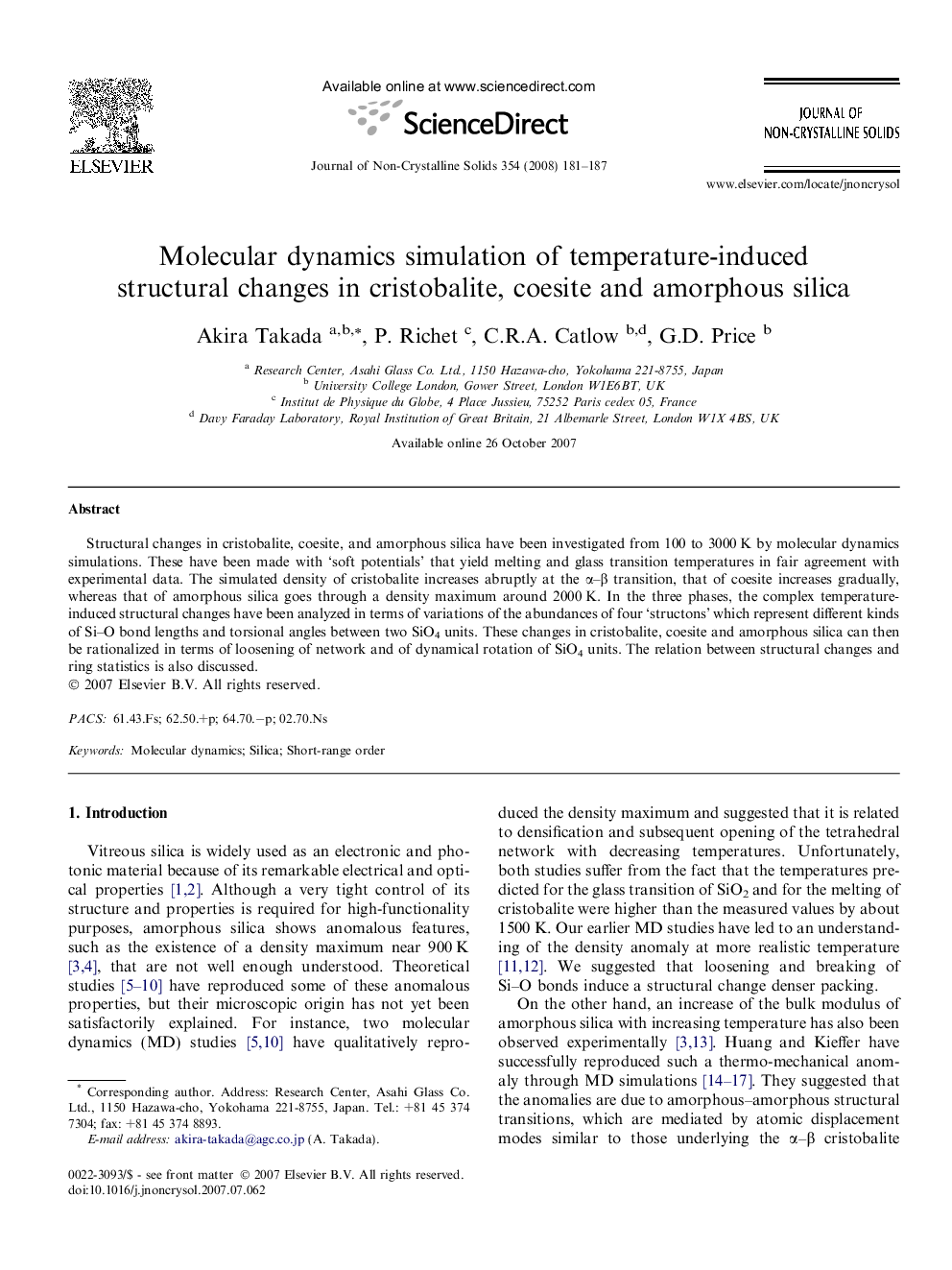| Article ID | Journal | Published Year | Pages | File Type |
|---|---|---|---|---|
| 1485039 | Journal of Non-Crystalline Solids | 2008 | 7 Pages |
Structural changes in cristobalite, coesite, and amorphous silica have been investigated from 100 to 3000 K by molecular dynamics simulations. These have been made with ‘soft potentials’ that yield melting and glass transition temperatures in fair agreement with experimental data. The simulated density of cristobalite increases abruptly at the α–β transition, that of coesite increases gradually, whereas that of amorphous silica goes through a density maximum around 2000 K. In the three phases, the complex temperature-induced structural changes have been analyzed in terms of variations of the abundances of four ‘structons’ which represent different kinds of Si–O bond lengths and torsional angles between two SiO4 units. These changes in cristobalite, coesite and amorphous silica can then be rationalized in terms of loosening of network and of dynamical rotation of SiO4 units. The relation between structural changes and ring statistics is also discussed.
